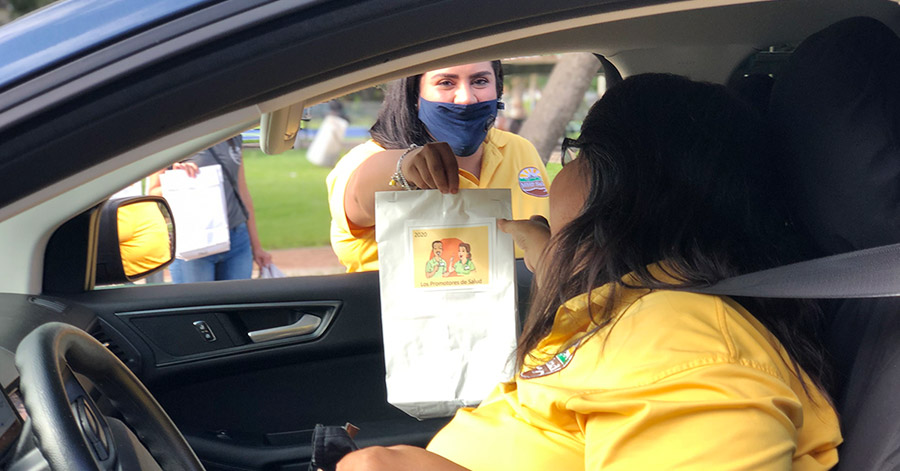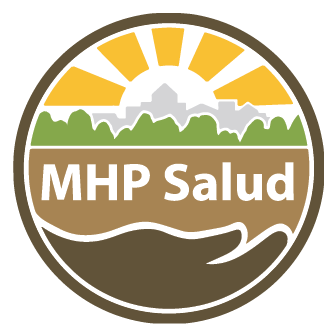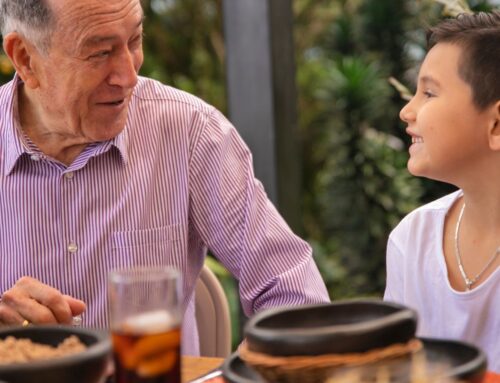Managing Diabetes During the Pandemic: CHWs Adapt to Better Support Migrant Farmworkers
Published December 2020 | Back to all news and updates
Migrant farmworkers are essential workers who disproportionately come from Central America and Mexico. This community experiences unique challenges that limit their access to healthcare, such as isolated agricultural work environments, poor living conditions, language and cultural barriers, or immigration status.1 These barriers place migrant farmworker communities at higher risk for health complications and/or poor health outcomes, especially during the COVID-19 pandemic.
How do migrant work conditions impact diabetes management?
Migrant farmworkers often work under challenging circumstances that require long hours and limited access to basic supplies (i.e., food or water). Unfortunately, these conditions place migrant farmworkers living with any health conditions or illness, particularly chronic diseases, like type II diabetes, at higher risk for complications.2,3
As the prevalence of type II diabetes increases, especially among Latinos, it becomes increasingly important to address how environmental factors, like work conditions, impact the management of this condition.4 For example, an important aspect of diabetes management is keeping blood sugar levels up (e.g. maintaining adequate glucose levels).5 However, it is common for migrant farmworkers to skip meals or snacks while working long shifts. Skipping meals can cause low blood sugar among diabetic persons, which can lead to fainting, shaking, or other negative symptoms.6
Diet is another important aspect of diabetes management. Migrant farmworkers generally live in camps, near their working site/farm that are located in rural areas, making it difficult for migrant farmworkers to access healthy foods.2,3 Eating balanced, healthy meals is a crucial aspect of diabetes management.5

Many migrant farmworkers work in fields that are regularly sprayed with pesticides. Studies have shown that long-term exposure by pesticide applicators is associated with an increased risk of developing diabetes.7 Additionally, job strain and stress is a risk factor for diabetes among working men and women, regardless of lifestyle choices.8 All of these factors may contribute to the development or poor management of diabetes among migrant farmworkers; therefore it is important that migrant farmworkers have access to healthcare and education on diabetes management in this occupation.
How do Community Health Workers support diabetes management for migrant farmworkers?
A Community Health Worker (CHW) is a trusted member of the community they serve. CHWs work in both clinical and non-clinical settings and provide referrals to local organizations that assist with health and social services. CHWs meet participants where they are–at home, at work, or out in the community –to better reach participants and meet their unique needs. CHWs are equipped to provide community-based, health-related services, such as assistance with translation, case management, and advocacy.9
CHWs are commonly employed for health education and outreach to migrant farmworker communities. These CHWs are usually bilingual and Latino/a, allowing for their role as a health educator/advocate to better connect and communicate with their migrant farmworker communities. CHWs support diabetes management initiatives among migrant farmworkers in several ways, such as connecting the community to healthcare or offering transportation services through their employers to regular check-ups. CHWs take the time to meet with migrant farmworkers and their families to educate and explain how to better manage their diabetes by paying attention to their nutrition, physical activity, stress, and medication adherence.10

How have CHWs changed their efforts since COVID-19?
Before the pandemic, CHWs conducted home visits and in-person outreach in migrant camps, communities, and clinics. In-person or onsite health services are crucial for migrant farmworkers to access necessary healthcare that is otherwise inaccessible due to long work hours, isolated locations, and lack of reliable transportation.3 However, since the pandemic, CHW activities have become limited to minimal social contact, phone calls, or virtual sessions. This makes providing individualized support and education very challenging, especially since many migrant farmworker patients/clients lack reliable internet or cell phone connection for virtual or over-the-phone support.
In response to these barriers, CHW-led diabetes programs are finding innovative ways to reach migrant farmworkers. Some programs are now offering mobile units or cluster clinics, where CHWs bring all of their services to the migrant camps, including testing for A1C levels.11 Other programs are using virtual technology to offer classes or health education sessions over text, phone calls, and video chat with participants.12
At the end of the day, CHWs take pride in being able to serve their communities. As Selenia Gonzalez, a Community Health Worker from MHP Salud, explained:
“The work we do in our communities is important because we take the time to meet with people, one-on-one, to go over the specifics of their diabetes management. We explain the diagnosis, the importance of nutrition and medicine storage, and why physical activity is key. Most importantly, we do all of this in their preferred language (Spanish) and at their level of understanding.”
HRSA Disclaimer
This publication is supported by the Health Resources and Services Administration (HRSA) of the U.S. Department of Health and Human Services (HHS) as part of an award totaling $753,959.00 with 0 percentage financed with non-governmental sources. The contents are those of the author(s) and do not necessarily represent the official views of, nor an endorsement, by HRSA, HHS or the U.S. Government. For more information, please visit www.HRSA.gov.
- http://www.ncfh.org/uploads/3/8/6/8/38685499/fs-facts_about_ag_workers_2018.pdf
- https://www.ruralhealthinfo.org/topics/migrant-health
- http://www.ncfh.org/naws-fact-sheet.html
- https://www.cdc.gov/diabetes/library/features/hispanic-diabetes.html
- https://www.mayoclinic.org/diseases-conditions/diabetes/in-depth/diabetes-management/art-20047963
- https://www.google.com/url?q=https://www.cdc.gov/diabetes/managing/manage-blood-sugar.html&sa=D&ust=1604362484534000&usg=AOvVaw2rhbuvZk0YybNDJBIz51Gn
- https://www.ncbi.nlm.nih.gov/pmc/articles/PMC2832308/#:~:text=Applicators%20who%20had%20used%20the,increased%20odds%20of%20diabetes%2C%20respectively.
- https://care.diabetesjournals.org/content/37/8/2268
- https://mhpsalud.org/our-chw-initiatives/community-health-workers/
- https://2ow7t71bjuyu4dst8o28010f-wpengine.netdna-ssl.com/wp-content/uploads/2020/07/The-Role-of-CHWs-in-Addressing-Diabetes.pdf
- https://www.thediabetescouncil.com/diabetes-hispanic-farmworkers-family-affairs
- https://mhpsalud.org/serving-the-community-during-covid-19/#work
Start or Strengthen Your CHW Program with MHP Salud
The work CHWs can do at your health care organization can improve the way your team works together and ensure that your organization is serving the population as effectively as possible. Further, CHWs programs are flexible by design and can be implemented to address a variety of health issues for different populations. Over the years MHP Salud has developed and successfully implemented CHWs programs to address a variety of health topics. We’ve used this experience and information to develop training and consulting to help organizations start or maintain Community Health Worker Programs. To learn more about our products and support please visit CHW Training and Consulting.
Blog Topics
About MHP Salud

MHP Salud has over 35 years of experience implementing CHW programs and training organizations looking to start and/or strengthen their own CHW programs. Visit our CHW Training & Consulting Services page to learn more about how we can help.






